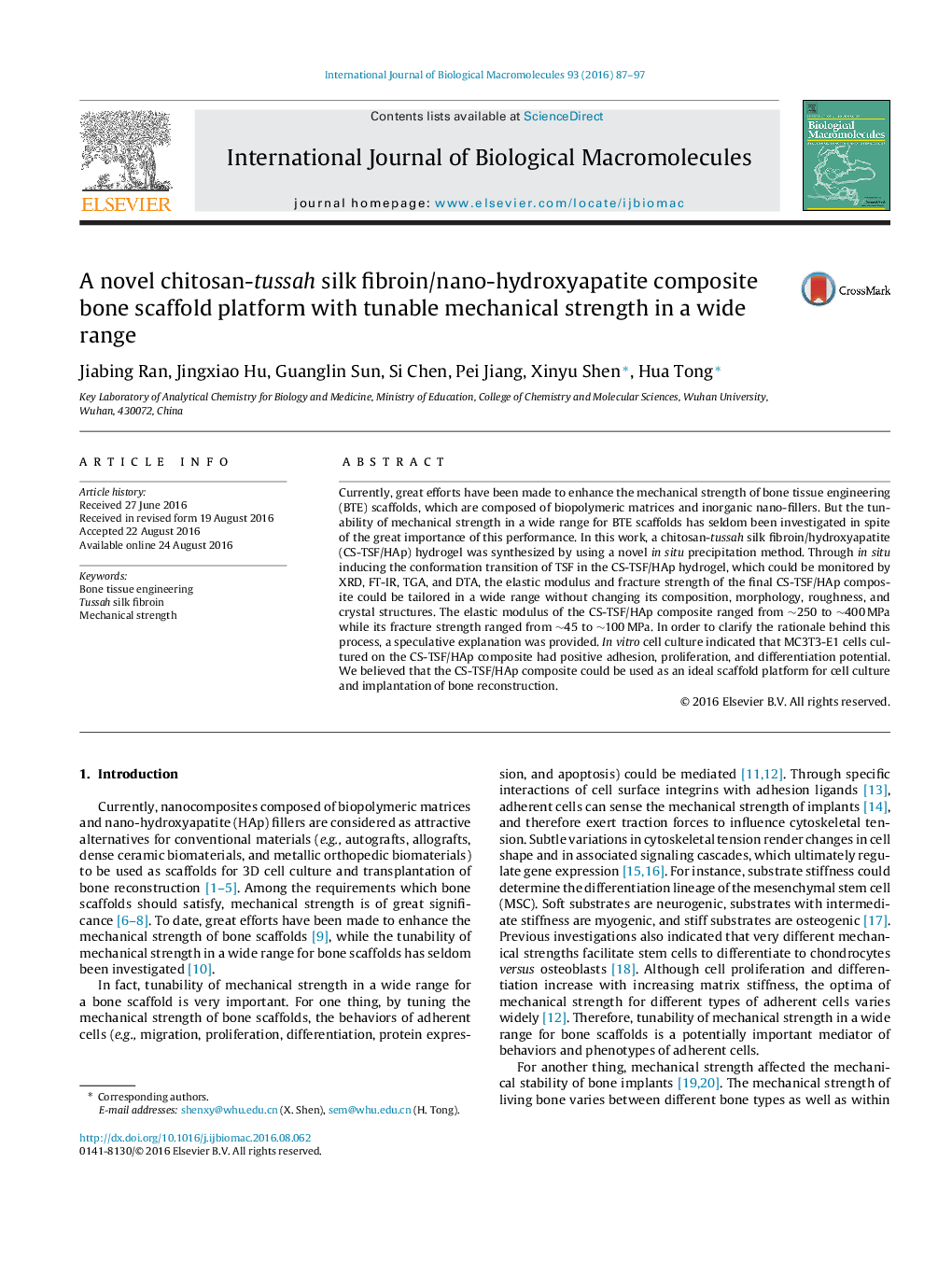| Article ID | Journal | Published Year | Pages | File Type |
|---|---|---|---|---|
| 1985534 | International Journal of Biological Macromolecules | 2016 | 11 Pages |
Abstract
Currently, great efforts have been made to enhance the mechanical strength of bone tissue engineering (BTE) scaffolds, which are composed of biopolymeric matrices and inorganic nano-fillers. But the tunability of mechanical strength in a wide range for BTE scaffolds has seldom been investigated in spite of the great importance of this performance. In this work, a chitosan-tussah silk fibroin/hydroxyapatite (CS-TSF/HAp) hydrogel was synthesized by using a novel in situ precipitation method. Through in situ inducing the conformation transition of TSF in the CS-TSF/HAp hydrogel, which could be monitored by XRD, FT-IR, TGA, and DTA, the elastic modulus and fracture strength of the final CS-TSF/HAp composite could be tailored in a wide range without changing its composition, morphology, roughness, and crystal structures. The elastic modulus of the CS-TSF/HAp composite ranged from â¼250 to â¼400Â MPa while its fracture strength ranged from â¼45 to â¼100Â MPa. In order to clarify the rationale behind this process, a speculative explanation was provided. In vitro cell culture indicated that MC3T3-E1 cells cultured on the CS-TSF/HAp composite had positive adhesion, proliferation, and differentiation potential. We believed that the CS-TSF/HAp composite could be used as an ideal scaffold platform for cell culture and implantation of bone reconstruction.
Related Topics
Life Sciences
Biochemistry, Genetics and Molecular Biology
Biochemistry
Authors
Jiabing Ran, Jingxiao Hu, Guanglin Sun, Si Chen, Pei Jiang, Xinyu Shen, Hua Tong,
